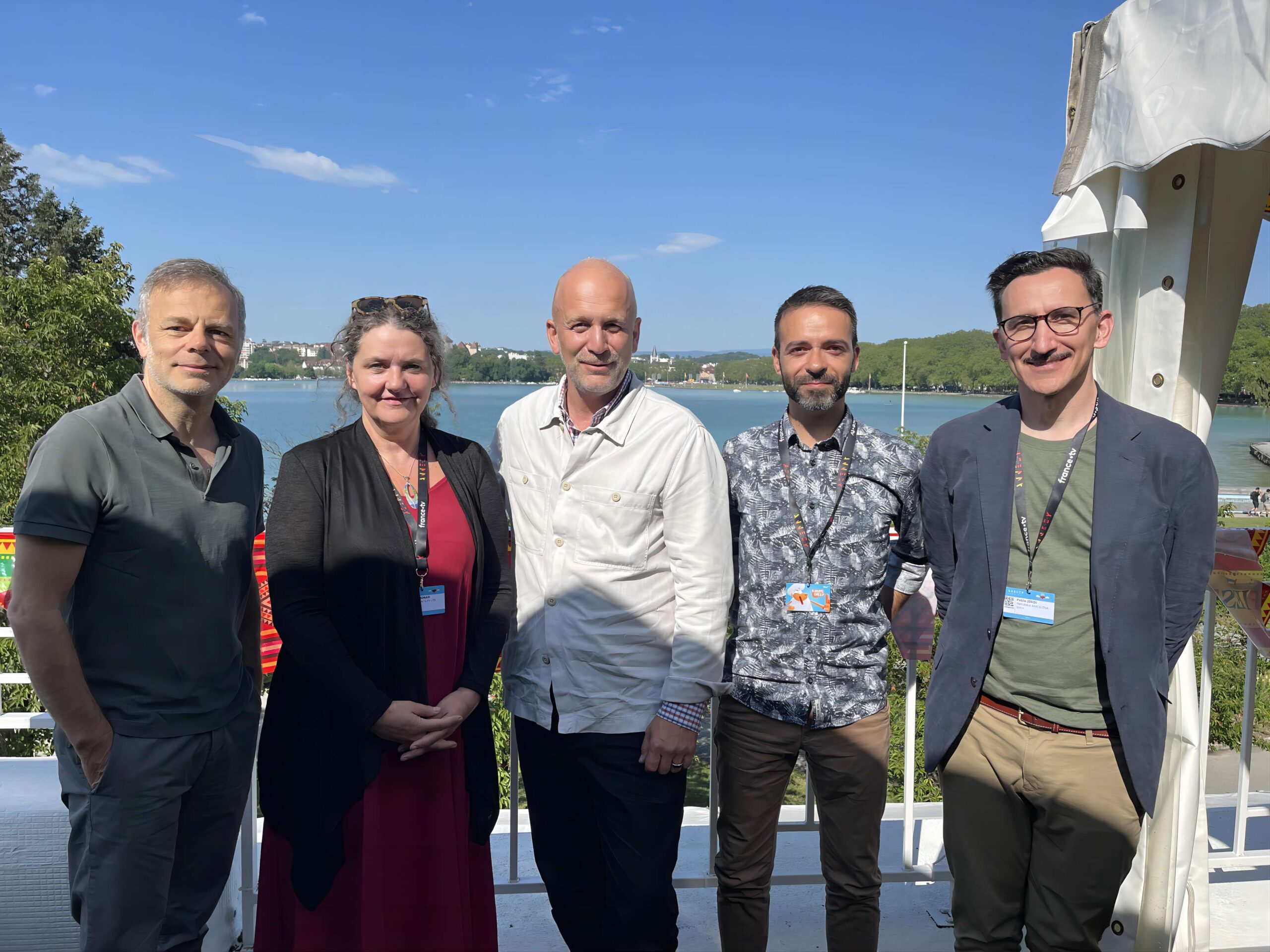Animation in Europe expands to 20 countries
Animation in Europe expands to 20 countries and calls on platforms to invest more in European animation
New board elected and advocacy of an animation quota for streaming platforms
The Federation of Animation Producers in Europe, established in 2016, is proud to announce the membership of Estonia, Greece and Portugal, bringing the number of european member countries to 20 (incl. associate member UK). The federation announces the election of its new board and advocates a more prominent place for European animation in streamers‘ offerings.
It announced the news during Annecy Festival, the members of Animation in Europe elected their new Board of Directors for the next two years. Its composition reflects both the federation’s geographical diversity, with 5 different countries represented, and its animation production diversity, with 3 film producers and 2 series producers.

Philippe Alessandri (Watch Next Media / France) will continue to assume the role of President and will be supported by four vice-presidents: Moe Honan (Moetion Films / Ireland), Pablo Jordi (Pikkukala/ Finlande), Ivan Agenjo (Peekaboo Animation / Spain) and Dirk Beinhold (Akkord Film Produktion / Germany).
During the General Assembly, Estonia, Greece, and Portugal became the latest additions to the federation’s membership. This expansion reflects the interest that European producers have in inter-country exchange of industry information and collective action at community level.
For a stronger presence of European animation in platform investment.
Following the 2018 vote on the European Audiovisual Media Services Directive (AVMS), which notably allows for foreign media to be subject to investment obligations, Animation in Europe welcomes its implementation in 14 countries but calls for an increase in platform investments in European animation.
European animated films and series are performing well on the international market. In Germany, for example, a handful of family animation films, representing barely 5% of film production, generate half of the feature film exports. In France, animated series account for nearly half of audiovisual revenues abroad, even though they only constitute about 10% of the total volume of national production across all genres.
This undeniable international potential contrasts sharply with the very small number of European animated series and films commissioned by platforms, even though these platforms are investing heavily in the production of local dramas. This observation is shared by all member countries of Animation in Europe.
Buyers from American streaming platforms focus their investments on national dramas to attract new subscribers. Children’s content, perceived as more universal, is directed by the headquarters in Los Angeles which engage American studios.
In France, the situation, while similar, is slightly more positive due to a decree emphasizing “diversity of genres” in the investment obligations of streaming platforms. Thus, Disney+, Netflix and Amazon have committed to supporting animation, but at levels that remain very low (from 0.56% to 1.28% of their annual turnover in France) compared to the place of animation in their catalogs. The majority of animation produced in France for these platforms is characterized by service provision, as seen in the case of the series Arcane.
A similar trend can be observed in Ireland, where service production is offered for series on American platforms. For instance, Netflix’s adaptation of the video game Cuphead is produced by Lighthouse Studios, based in Irland.
The situation is not much better in Spain, with only two original productions for Netflix and one adult animation program, Pobre Diablo, for Max (Warner). The rest of Europe’s animation industry seems to profit even less from US streaming platforms. For example, not one single production has been commissioned by a streamer in countries such as Germany.
“We need to ofer children, who make up over 10% of the EU’s population, content created and produced in Europe. The introduction of an animation quota would ensure fair representation of European animation on platforms, ” concludes Philippe Alessandri, President of Animation in Europe.
Animation in Europe wishes to underscore the crucial need for more comprehensive data collection by governments and regulatory authorities across Europe. This data will bolster the industry’s resilience in this challenging landscape, not just for survival, but to remain competitive. It is also essential to ensure that cultural and age diversity is thoughtfully accommodated. The association urges these entities to consistently monitor and share detailed data, such as demographics, viewership data, ratings & reviews, trending genres, subscriber growth, and more.
In light of these challenges, Animation in Europe calls on the European Union and EU member states to leverage the planned review of the AVMS Directive, set for no later than the end of 2025, to defend the position of European animation and promote a European editorial offering targeted at a young audience.

熱門頭條新聞
- V-Ray 7 coming soon to Blender
- Japan prime minster pledges support for content industry at Tokyo film festival opening
- Nintendo cuts its operating profit forecast
- Asians in Animation Annual Career Summit
- Asian Animation Summit 2024
- MATTEL AND OUTRIGHT GAMES RELEASE ‘BARBIE PROJECT FRIENDSHIP’
- New SAG-AFTRA and Ethovox Agreement Empowers Actors and Secures Essential A.I. Guardrails
- Comedy Adventure Loco Motive Coming to PC and Switch November 21st
